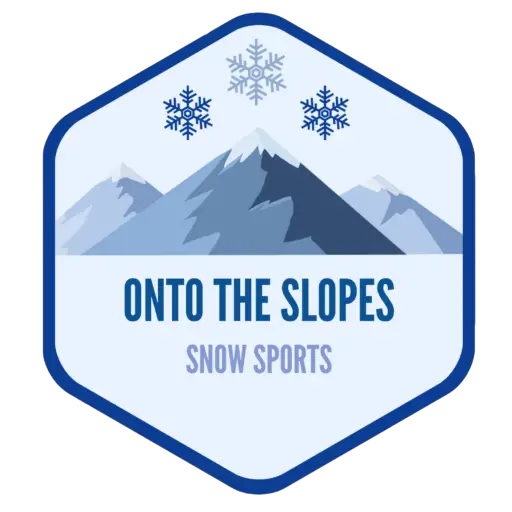Choosing the right type of skis is essential to get the best experience and performance possible. Two popular types of skis are carving, also known as on-piste skis and all-mountain skis. I’ll be explaining the difference between them and how to decide which is the best type of ski for you.
Carving (Piste) vs All-Mountain Skis 101
Carving (on-piste) skis are narrower, stiffer and have a smaller turning radius and more camber compared to all-mountain skis. Carving skis are designed for use on groomed pistes whereas all-mountain skis can be used on groomed and un-groomed terrain.
| Carving (Piste) Skis | All-Mountain Skis |
| Designed for groomed pistes | Designed for groomed and un-groomed pistes |
| Waist width less than 85 mm | Waist width between 90-100 mm |
| Usually have more camber | Usually have some camber and rocker |
| High flex rating (stiffer) | Moderate flex rating |
| Smaller turning radius (less than 17 m) | Moderate turning radius (15-22 m) |
| Deeper sidecut | Moderate sidecut |
| Maximum edge hold | Moderate edge hold |
| Fast and nimble | Stable and versatile |
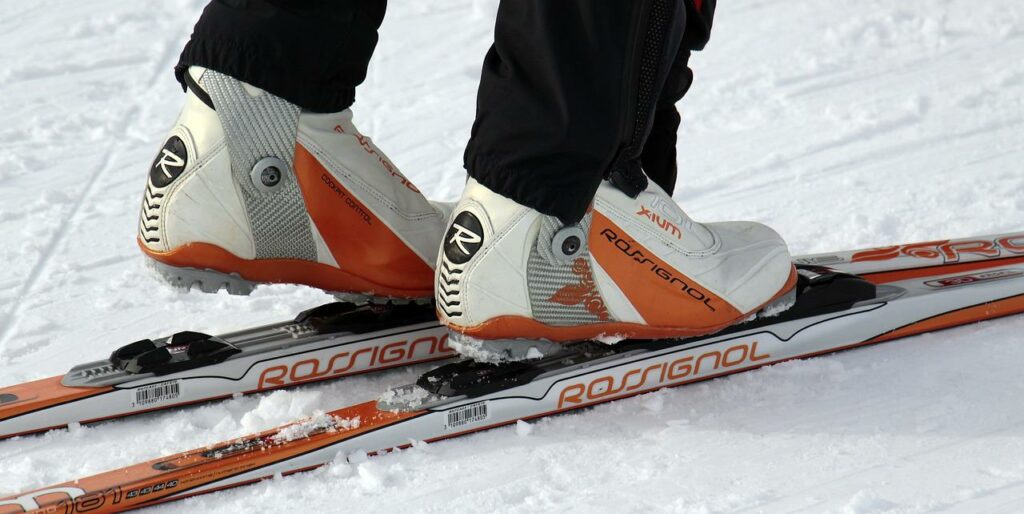
Carving (Piste) Skiing
Carving skis are designed to be used on-piste to help improve speed when parallel turning. When the skier is carving, the edges of the ski cut into the snow so they don’t skid.
Carving skis are general used on relatively soft snow which you’ll find at the start of the day. Carving is difficult on icy ground as it is too hard to allow the edges of the ski to dig in. The snow also can’t be too soft as it won’t give the skier enough support hence it is difficult on ungroomed pistes.
Since the primary purpose of a carving ski is to help with parallel turning on-piste, the skis have a deeper sidecut and are typically quite narrow.
The deeper sidecut to improve edge grip allowing the carve to be as smooth as possible. Having a narrow design allows the skier to hold an edge more quickly and makes them more precise and nimble.
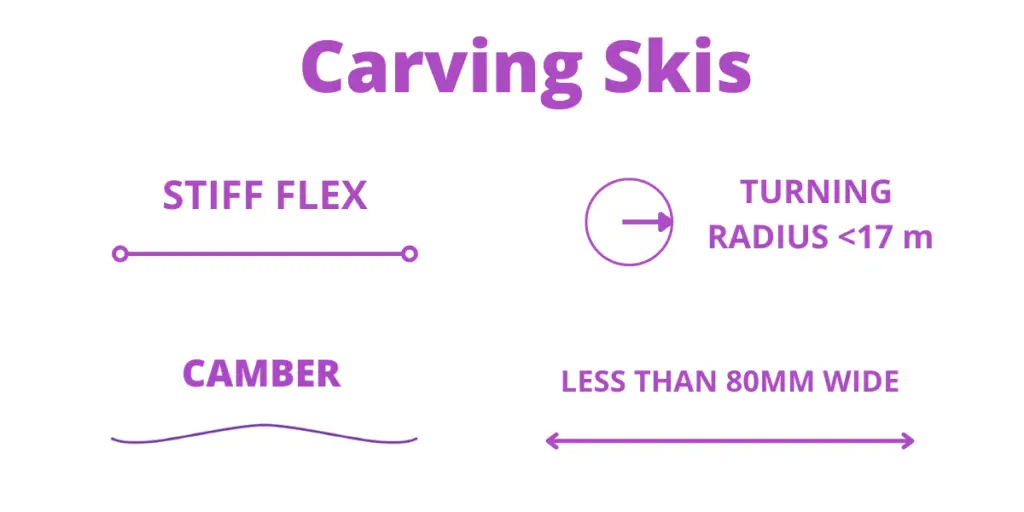
All-Mountain Skiing
All-mountain skis are designed to work well in a range of different conditions. They have a moderate waist which allows them to work in both powder and groomed conditions.
There is some level of variation between different all-mountain skis in terms of flex, width and camber-profile however they all tend to be quite “moderate” so they work well on different types of snow as opposed to specialist skis such as carving and powder which have more extreme characteristics.
A good all-mountain skis should have a good-level of edge hold and be reasonably fast as well but still be able to float in shallower powder. All-mountain skis do not typically perform as well in very deep powder and work best on groomed pistes.
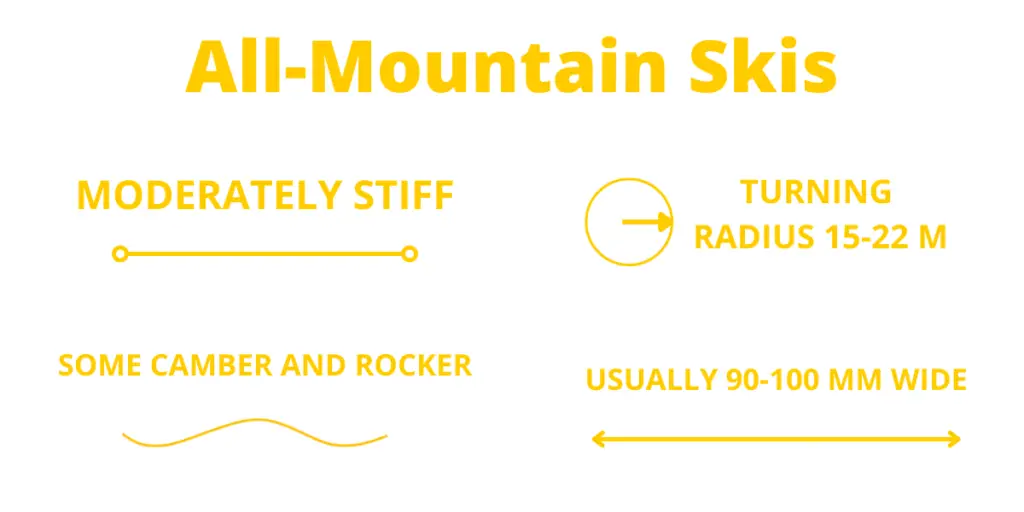
Comparing Characteristics of All-Mountain and Carving Skis
Now that we’ve been through the basics of all-mountain and carving skis, let’s look at the physical characteristics and how they differ. We will be considering:
- Width
- Flex
- Turning Radius
- Camber Profile
- Direction
Width
Carving skis are narrower compared to all-mountain skis. Carving skis typically have a waist width of 85 mm or less, whereas most all-mountain skis have a waist width between 90-100 mm.
The narrower waist of the carving skis allows the skier to establish an edge sooner and makes the ski feel more nimble and faster which is highly desirable on-piste. All-mountain skis have a wider waist to give the ski a greater contact area with the snow which is better for un-groomed/ powder conditions.
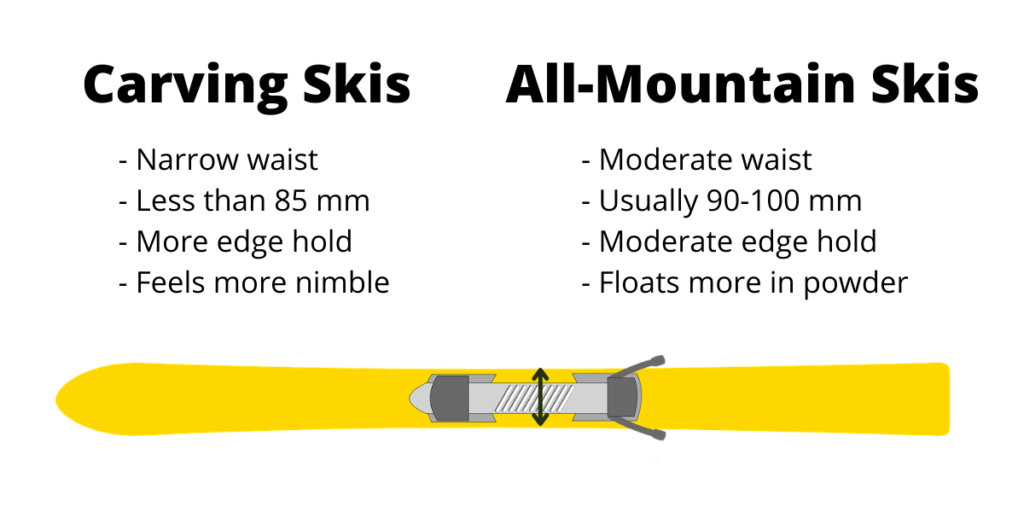
Flex
Carving skis are stiffer and hence have a higher flex rating compared to all-mountain skis which have a moderate level of stiffness.
The extra stiffness of a carving ski helps to improve stability at high speeds. All-mountain skis have a moderate level of stiffness to make sure they feel stable enough on-piste but can still perform on un-groomed terrain.
Check out my article comparing soft and stiff skis to learn more about this topic.
Turning Radius
The turning radius of a ski helps to make turns tighter and improve speed. Carving skis have a smaller turning radius compared to all-mountain skis.
Typically, the turning radius of a carving ski will be less than 17 meters as this helps to make carving easier as the turns are tighter. All-mountain skis have a moderate turning radius which is typically between 15-22 meters. The wider turning radius helps to improve straight-line speed and works better in powder.
Camber Profile
The camber profile of a snowboard refers to the curvature of the board when it is flat. You can get different combinations of “camber” and “rocker” to make up this profile.
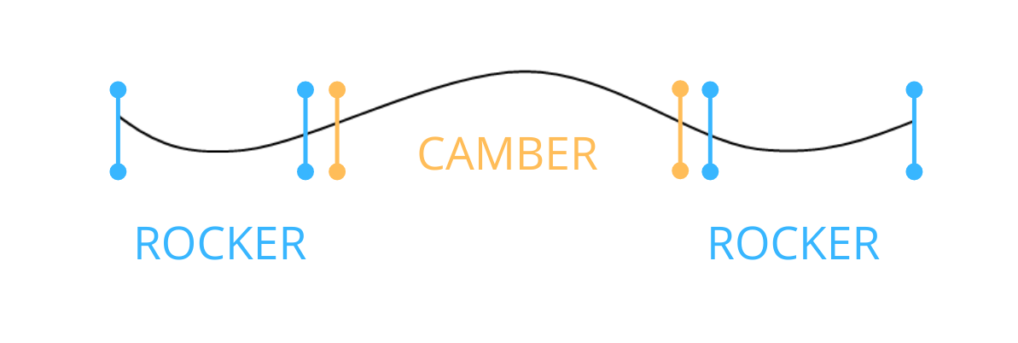
Carving skis have more camber and less rocker which helps to improve edge hold and speed. All-mountain skis can have different camber profiles but they generally tend to have more rocker in comparison to carving skis. This helps to improve the performance in power.
Shape
Carving skis have a deeper sidecut compared to all-mountain skis. This means that the waist of a carving ski is narrower in relation to the tip and tails. The deeper sidecut helps to lower the turning radius of the ski which is preferred for carving. Carving and all-mountain skis are both directional.
Should You Choose All-Mountain or Carving Skis?
If you are only planning on using your skis on-piste, then carving (piste) skis are the best option. They will allow you to turn quickly and smoothly and have good stability at high speeds.
However, if you want to use your skis on un-groomed and groomed pistes then you’ll need an all-mountain ski. Although it won’t give you maximum performance on either terrain, it is the most versatile option you can choose.
Remember though that there is some level of variation within the “all-mountain” category so you can choose a ski based on which kind of terrain you ski on more.
If you mainly ski on-piste but want to do a bit of skiing on un-groomed terrain then you can go for a slightly stiffer and narrower all-mountain ski. Alternatively, if you mainly want to ski on un-groomed pistes but still want the option to ski on-piste then you’ll want an all-mountain ski which is slightly softer and wider.
Beginners can use either on-piste (carving) or all-mountain skis. However, most beginners will be learning on-piste, so carving skis are typically a better option and the smaller turning radius is also helpful for beginners to give them more control over their turns.
Check out my in-depth comparison between freeride and all-mountain skis.
Here are some more articles that you might find useful:
